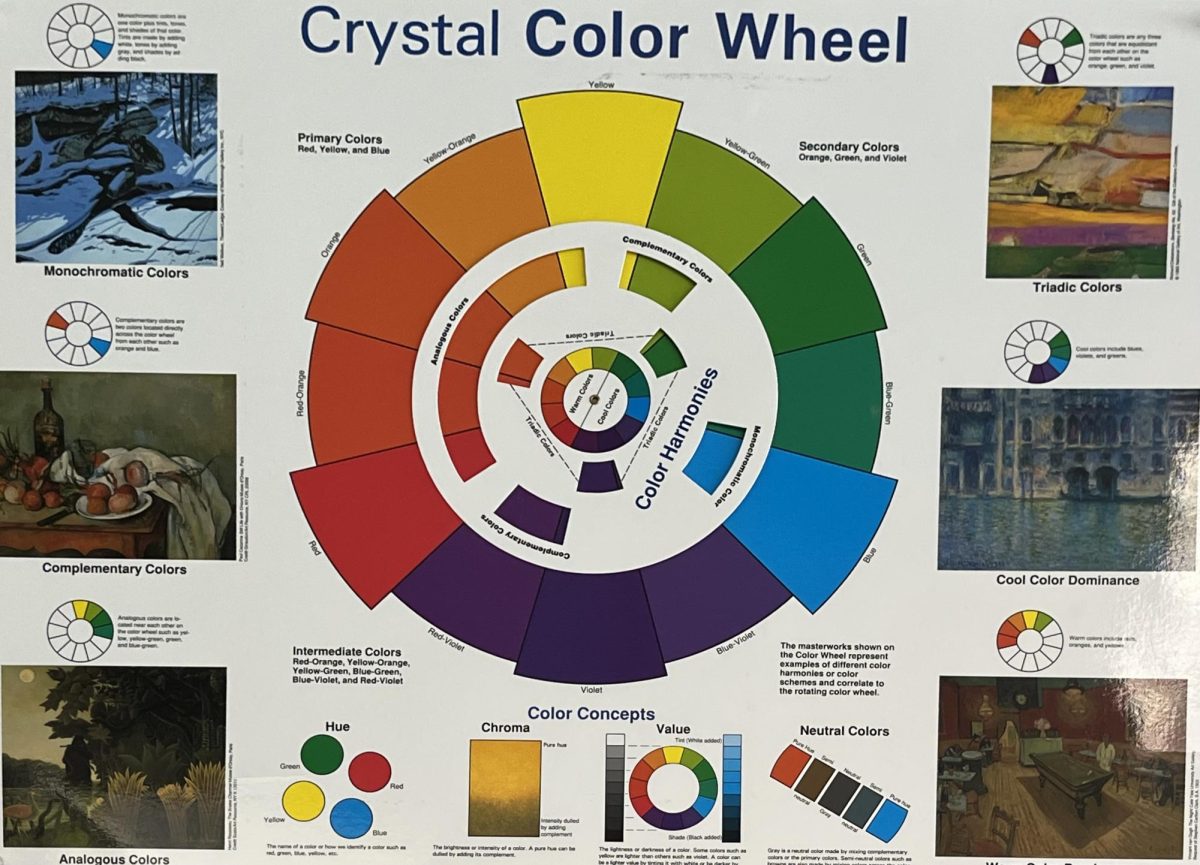You heard me right. Magenta, as a color, does not exist.
“How???” You may ask, your world ashook with horror at the notion that magenta does not exist.
Great question! And the actual answer is a little complicated…
I’ll start with definitions. Magenta, broken down to its fundamental scientific levels, is not a color that exists in the world outside of human brains. This is called a perceptual color, or a color that only exists based on our brains trying to perceive the distance between red and blue wavelengths of light.
Let me back up a little bit, though. Our brains process color through the use of cones, light-sensitive cells in our eyes. These cones react to wavelengths and send the information to our brains, which processes the light into colors.
A wavelength is how the fancy scientists define light. Light does not move in a straight line; instead, it moves in waves. How long the time between the tops of the wave defines what type of light it is, ranging from ultraviolet (extremely short & fast waves) to infrared (very long & slow waves)(Pace.oceanscientists.org).
Each color has its own distinct wavelength, everything from neon pink to deep-ocean blue. The wavelengths speed up as one goes from reds to violet, which is important for later!
Human cone cells react to three distinct wavelengths of light: red, green, and blue. That means we can see that range of color, going from red to violet, but we can’t see colors past either end of that spectrum (aao.org).
But other animals, such as the mantis shrimp, can! Mantis shrimp can see colors far beyond what we can see, due to them having 12-16 types of cone cells. This also allows them to perceive colors such as ultraviolet and polarized light (scholarblogs.emory.edu). Another fascinating fact about mantis shrimp is that they cannot see any shade of magenta!
This brings us to the core of this article: magenta has no real wavelength (thoughtco.com). Our brains make up this non-existent color to make the wheel of colors we can see into a circle, with red smoothly flowing into violet. What actually creates magenta as something we can see is a strange mix-mash of red and violet wavelengths, without any that are actually unique to magenta itself.
Here’s a stupid metaphor: magenta is like photoshopping chicken legs onto a photo of your friend and claiming it’s real. The chicken is real, and so is your friend, but the amalgamation of both is something you’ve (quite oddly) created!
That’s what our brains do: photoshop violet on top of red and try to pass it off as a real color. Outside humans, magenta would look like a red or a violet, but not a mix of the two!
Many like to argue the point that because we do perceive the color magenta, that means it’s real. And while yes, these nay-sayers are correct that humans do see magenta and that makes it real to the perceiver, we are among the very unique few who can actually imagine this color. Instead, magenta is just an odd mix of cone cell feedback that our brain creates something unique out of!
So, the next time you walk through an art gallery and see the beautiful works of Hans Hofmann, see a pretty magenta flower, or paint your nails in that impossible color, know that everything else in this world is seeing something vastly different than you!



